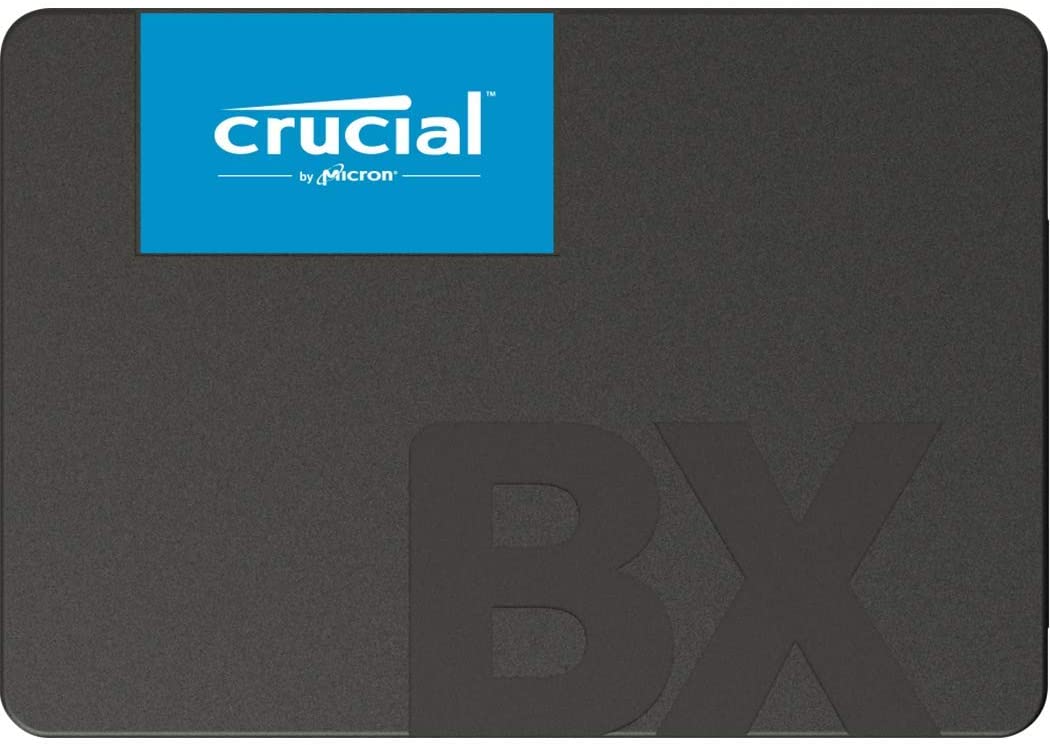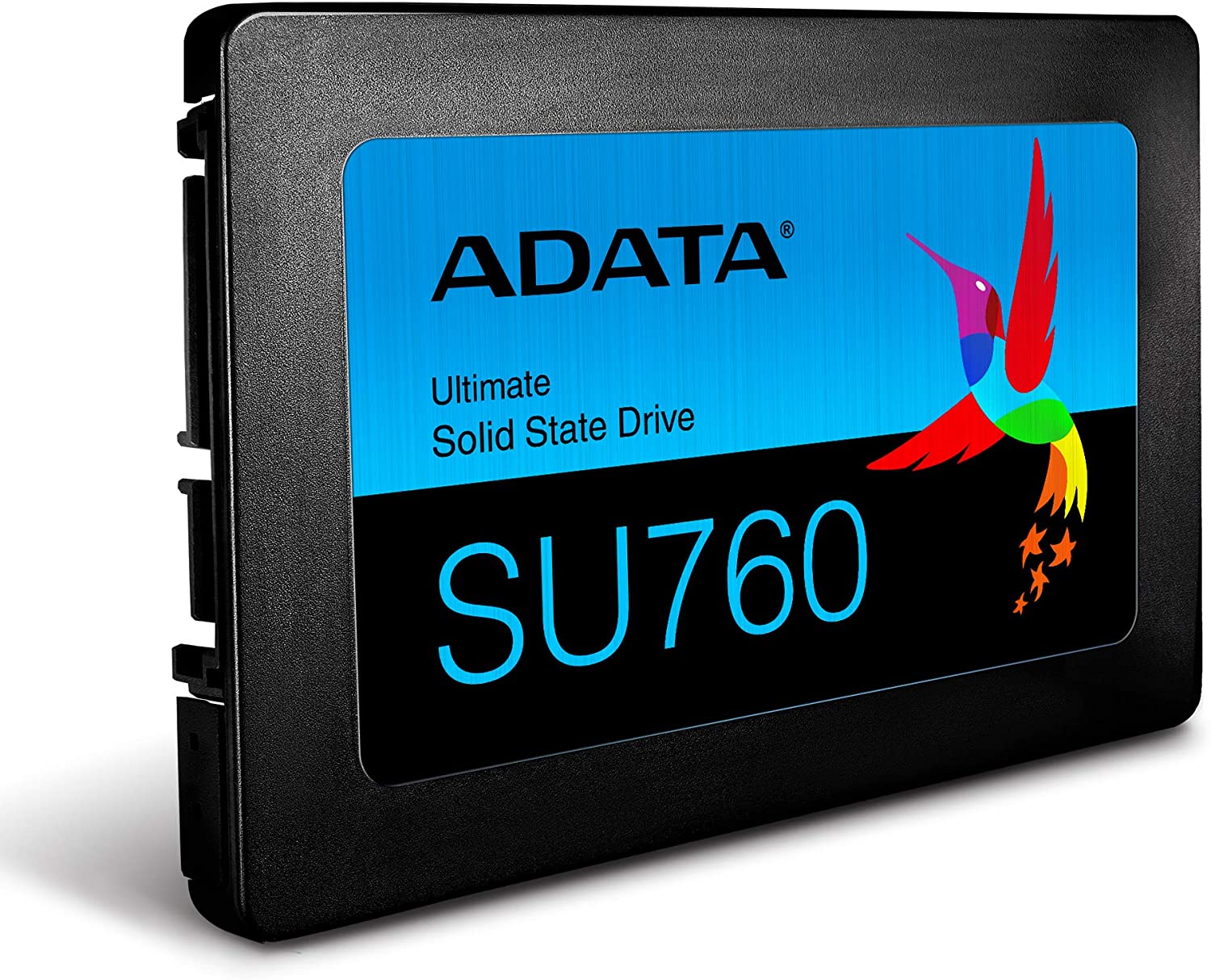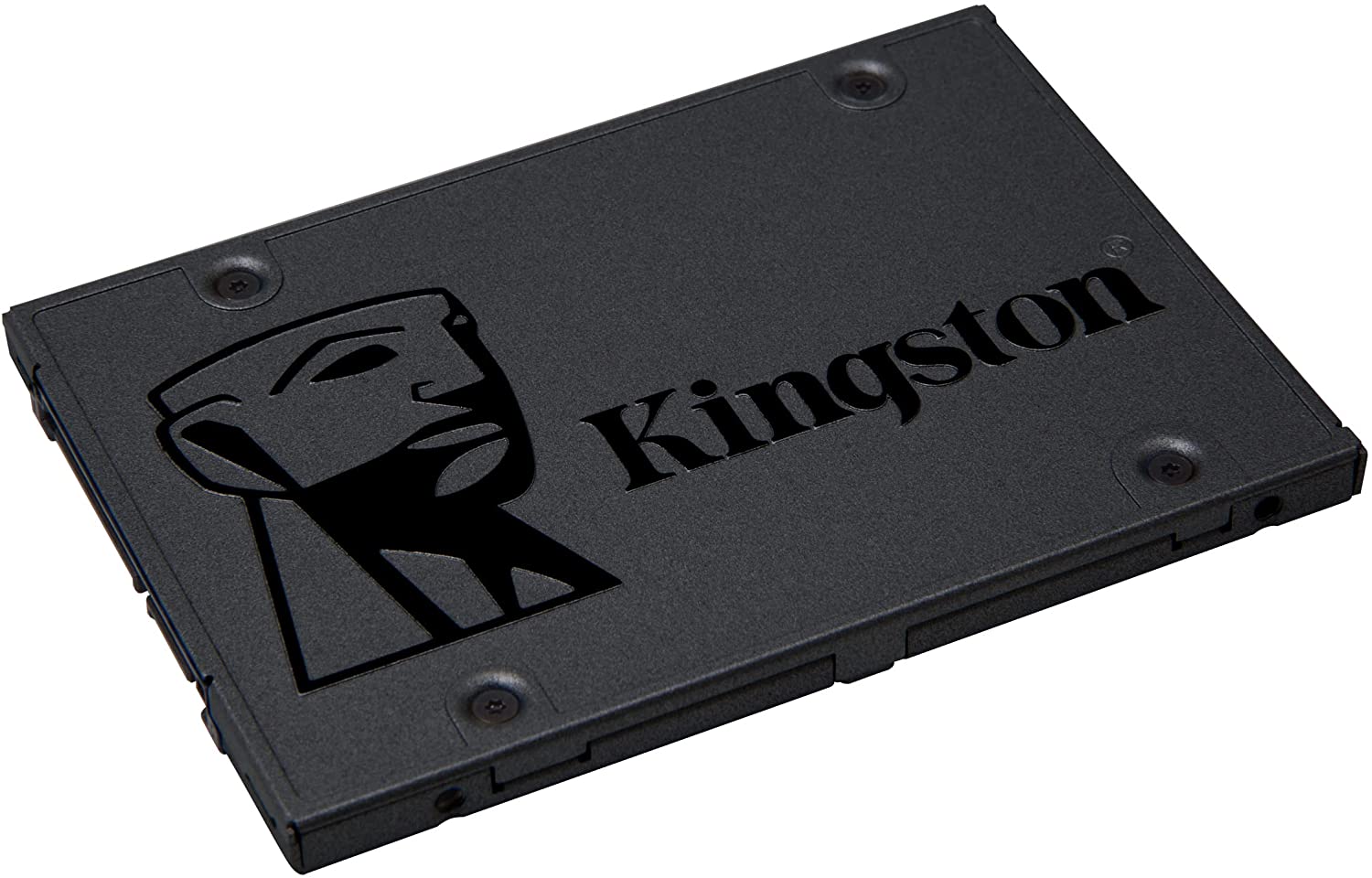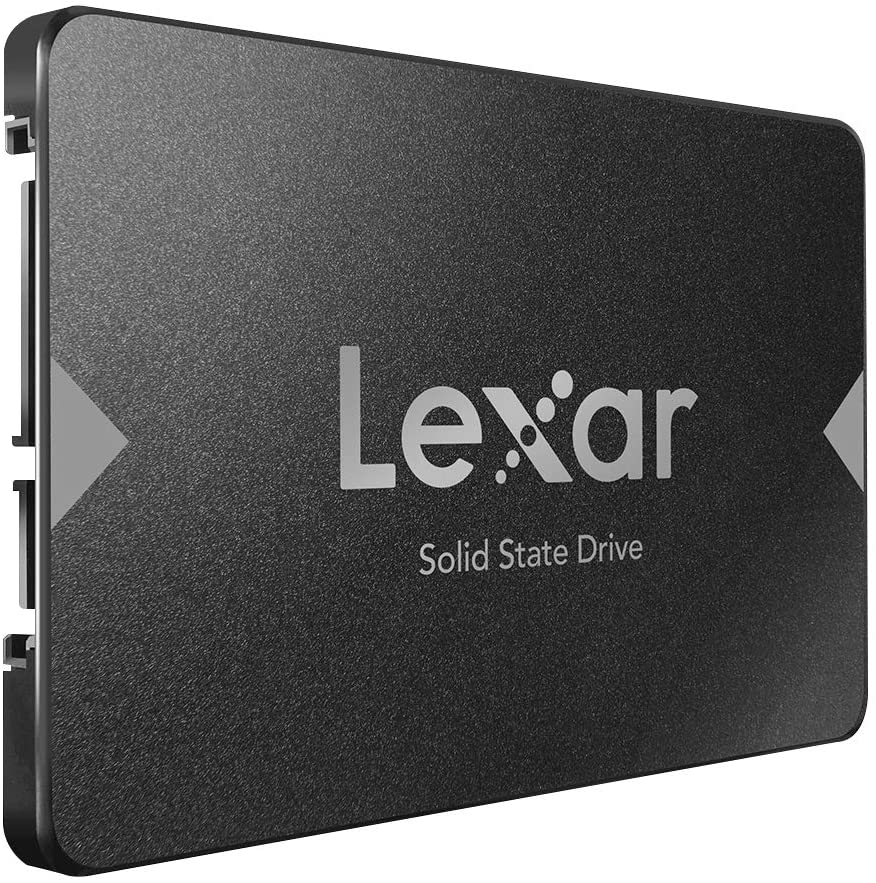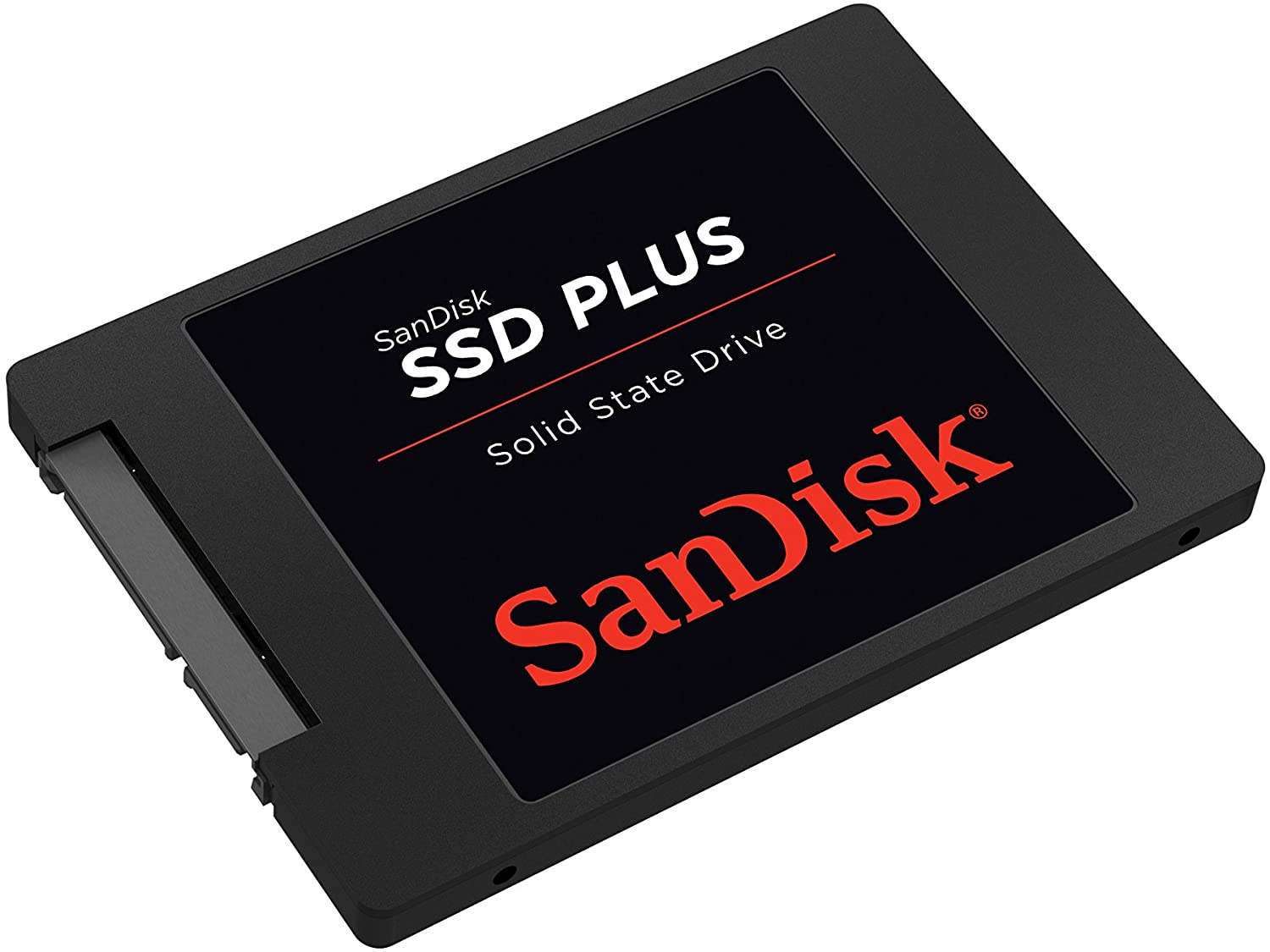There is one situation in which having a DRAM cache makes little to no impact. If you want to use a SATA SSD for game storage, chances are there will not be much of a difference between a SATA SSD with a DRAM cache and one without. The games are not designed to take advantage of the cache itself, so it does not have that much of an impact on loading times. This is one situation where buying the best DRAM-less SATA SSDs in high capacity can be a good option for mass game storage.
The Best DRAM-less SATA SSDs To Buy – Our Picks
So you might want to buy a DRAM-less SSD for your gaming PC to use as a secondary game drive. Well, even though that might seem like a great idea at first, the market is full of cheap DRAM-less SSDs that have horrible performance, so you would want to stay away from those. Fortunately, we have curated a list of our picks for the best DRAM-less SATA SSDs to buy in 2022. The BX series is more of a budget-oriented SATA SSD series from Crucial with their MX series more focused on the high-performance market. Crucial is one of the most reliable brands in the storage space and it is owned by Micron, which is a giant in the silicon/memory space. It is understandable that Crucial always gets the cream of the crop from Micron in terms of NAND flash and the BX series is no exception.
The BX500 has been offered in 120GB, 240GB, 480GB, 1TB, and 2TB storage capacities. Crucial has covered most of the storage options out there and most people will find the perfect capacity option for them in this selection. The only omission is the 4TB option which would have been nice for large tertiary storage, but these are DRAM-less drives so their endurance is not the best. Keeping a lot of data for a long time on a DRAM-less drive might not be the best idea even though Crucial is a reliable brand and their SSDs have good endurance. You may consider an SSD from our list of the best high capacity SSDs for this purpose. The SSD is offered only in a 2.5-inch form factor. It would have been nice to see an M.2 option for this drive since the M.2 2280 SATA form factor makes installation so much easier. You do not have to worry about any SATA data or SATA power cables, and the SSD sits directly on top of the motherboard, giving the system an overall cleaner look. Unlike most DRAM-less drives in this price range, Crucial did not cut corners with the internals. The BX500 uses an SMI 2258/59XT controller with a single-core, 4-ch, 8-CE/ch configuration. Indeed, the BX500 does not feature an onboard DRAM cache, but it is still a really good drive for particular use cases. The NAND has been provided by Micron in a 3D TLC/QLC configuration with either 64 or 96 layers, and the drive is rated to saturate the SATA 6Gbps link despite its lack of DRAM Cache. The rated sequential read speeds can go up to 540 MB/s while the sequential write speeds can go up to 500 MB/s which is right up there with a lot of very good SATA SSDs. Another strong point of the BX500 is its price, as it is cheaper than most other SSDs in this roundup. This makes it an excellent value purchase and the best overall DRAM-less SATA SSD on our list. It should be considered by someone looking for a lot of SATA flash storage on the cheap. ADATA is a pretty well-known manufacturer and they have been praised in the enthusiast community for their excellent RAM products as well as SSDs. One of the finest DRAM-less SSDs on the market comes from Adata in the form of the Adata SU760. This SSD can be a good alternative for the BX500 and delivers much the same features and performance as the Crucial drive.
Adata has offered the SU760 in 240GB, 480GB, and 1TB options. While these are the biggest-selling capacity options out there, the omission of the 128GB and 2TB variants is a big drawback of the SU760. People often buy the 128GB variants of DRAM-less SSDs as cheap upgrades from a hard drive for an increase in speed and system responsiveness. Similarly, the 2TB and even 4TB versions of the drive should have been added for people who want to add a lot of solid-state storage to their system without breaking the bank. The SU760 comes in the 2.5-inch form factor which is supported in most desktop PCs and laptops as well, so it is the most popular form factor of SATA SSDs. It would have been nice for Adata to include an M.2 form factor option as well though. M.2 cleans up the aesthetic of the build very much as it eliminates the need for multiple cables and drive mounting positions in favor of direct installation onto the motherboard. Related Read: Best PCIe Gen 4 SSDs Adata has provided some pretty decent internals in the SU760. There is a Realtek RTS5733DMQ controller in the drive which is a DRAM-less controller. The NAND has been provided by Micron in a 3D TLC configuration with 64 layers. The Adata drive features SLC caching which is a pretty good feature for a DRAM-less drive. Instead of the DRAM cache, the SU760 has a separate cache made up of the fast SLC NAND which alleviates some of the performance loss due to the DRAM cache. The SLC is generally much faster than the TLC that is present in the rest of the drive. This mechanism compensates for the lack of DRAM cache somewhat. Adata has rated the speeds of the SU760 to be right up there with the best SATA SSDs out there. The drive can read at 550 MB/s and write at 520 MB/s when it comes to sequential operation. These speeds make it the best performing DRAM-less SATA SSD on our list. With these features, the Adata SU760 is a strong competitor to the BX500 and is just let down by the slightly higher price, and lack of any 2TB or 4TB capacity options. Kingston is also one of the most reputable storage and memory brands in the world and they offer some pretty good solid-state drives in every price range. One of their best-selling budget SSD has been the Kingston A400 which offers some good features in an affordable package. The Kingston A400 is another DRAM-less drive that can make a lot of sense for mass storage, and might just be the best value DRAM-less SATA SSD on our list.
Kingston has offered the A400 in the 120GB, 240GB, 480GB, 1TB, and 2TB configurations which is a good step from Kingston since those capacities are the most demanded ones on the market. Unlike Adata, Kingston has added the 120GB variant as well which will be a cheap and quick upgrade for the consumers looking to switch from a hard drive. The 1TB and 2TB options are included which make the most sense from a consumer point of view, as these capacities deliver a lot of solid-state storage at a relatively affordable price. The A400 is the only drive in the roundup that comes in both the 2.5-inch as well as the M.2 2280 form factor. The 2.5-inch form factor for SATA SSDs is fairly standard and while that is not going anywhere, Kingston has also added the M.2 2280 form factor for the people who are looking for a cable-free, seamless experience. The M.2 makes installation easier as the drive is installed directly onto the motherboard, and there are no cables to worry about either. All in all, a nice addition from Kingston. Internally, the A400 is rocking a Phison S11 controller in a Single-core, 2-ch, 8-CE/ch configuration. The drive lacks any kind of DRAM cache as we have established, but it still delivers decent performance when it comes to mass storage. The NAND has been provided by Toshiba in a 2D or 3D TLC configuration with 32+ layers in the 3D configuration. The choice of planar NAND hurts the Kingston’s performance a bit, especially during write operations. Adata claims that the A400 can deliver read speeds of up to 500 MB/s and write speeds of up to 450 MB/s which is a bit lower than other drives in this roundup but not fairly noticeable. All in all, the Kingston drive is another decent DRAM-less option that can be considered for mass storage at an affordable price. It offers multiple capacity options and even has an M.2 form factor option that is unique to the Kingston in this roundup. One of the lesser-known brands in our roundup is Lexar, but they have a pretty decent SSD offering in the form of the Lexar NS100. This SSD can be the best alternative DRAM-less SATA SSD that is way better than some of the cheaper knock-off SSDs that can be found in this price bracket.
The NS100 comes in 128GB, 256GB, 512GB, and 1TB capacities which cover most of the capacity demands of the consumers. However, the omission of the 2TB option is still a disappointment for those who are looking for a lot of solid-state storage on the cheap. Lexar has also released the NS100 in only the 2.5-inch form factor which is standard for SATA SSDs, so you do not have the option of an M.2 2280 form factor with the NS100. When it comes to internals, the NS100 is surprisingly well-built. The controller used is a Marvell 88NV1120 in a Dual-Core, 2-ch, 4-CE/ch configuration which is a DRAM-less controller. The NS100 is using Micron’s NAND memory in a 3D TLC configuration with 64 Layers. This allows the NS100 to saturate the SATA 6Gbps link with read and write speeds of up to 550 MB/s and 520 MB/s respectively. The NS100 is a surprisingly solid option coming from a relatively lesser-known brand such as Lexar. It seems to have good internal components and also appears to be a reliable drive overall. The lack of a 2TB option and its marginally higher pricing does hurt its stance though, but the Lexus NS100 is a good alternative to the drives already mentioned if the need arises. Our final pick of the day comes from one of the world’s leading manufacturers of memory and NAND flash. Sandisk has been one of the biggest names in the industry for quite some time now. They have a solid budget offering in the SATA SSD space with the Sandisk SSD Plus. This SSD can make be a nice affordable alternative to the drives mentioned above, should you not manage to find any of them at your retailer of choice.
Sandisk has released the SSD Plus in most of the capacity options that are usually sought after by the consumers. The 120GB, 240GB, 480GB, 1TB, and 2TB options are all present which makes the Sandisk SSD plus a great option for people looking for affordable secondary SSD storage, as well as for people looking for a cheap 128GB SSD to upgrade form a hard drive. This might be the best storage DRAM-less SATA SSD on our list for this reason. Sandisk has only offered the SSD Plus in 2.5-inch form factor though. Internally, the SSD Plus is using an SMI SM2256S controller in a Single-core, 4-ch, 8-CE/ch configuration. The SSD is DRAM-less of course which should not be a major problem if you’re running it as a tertiary form of storage. Sandisk is using its own NAND Flash in a 2D TLC configuration, which means that the NAND Flash is not layered. This can hurt the longevity and the endurance of the drive in some scenarios. Sandisk is claiming that the drive can hit sequential read and write speeds of up to 545 MB/s and 450 MB/s which is a little lower than other offerings particularly when it comes to the write speeds. Overall though, the Sandisk SSD Plus is another good budget SSD option that can be used for backup storage of non-sensitive data such as games. Although due to the lack of DRAM cache and the slower write speeds we would not recommend using the Sandisk SSD Plus as your primary OS drive, it can still be a handy drive to have in the system to dump some games on and enjoy faster loading times without completely breaking the bank. META DESCRIPTION: In this roundup, we rank the best DRAM-less SATA SSDs on the market on the basis of performance, reliability, and value.
5 Best High Capacity SSDs To Buy In 20225 Most Reliable High Capacity SSDs To Buy In 2022NVMe PCIe M.2 Vs. SATA - Which Should You Buy and Why?5 Best Heatsinks For NVMe SSDs In 2022


